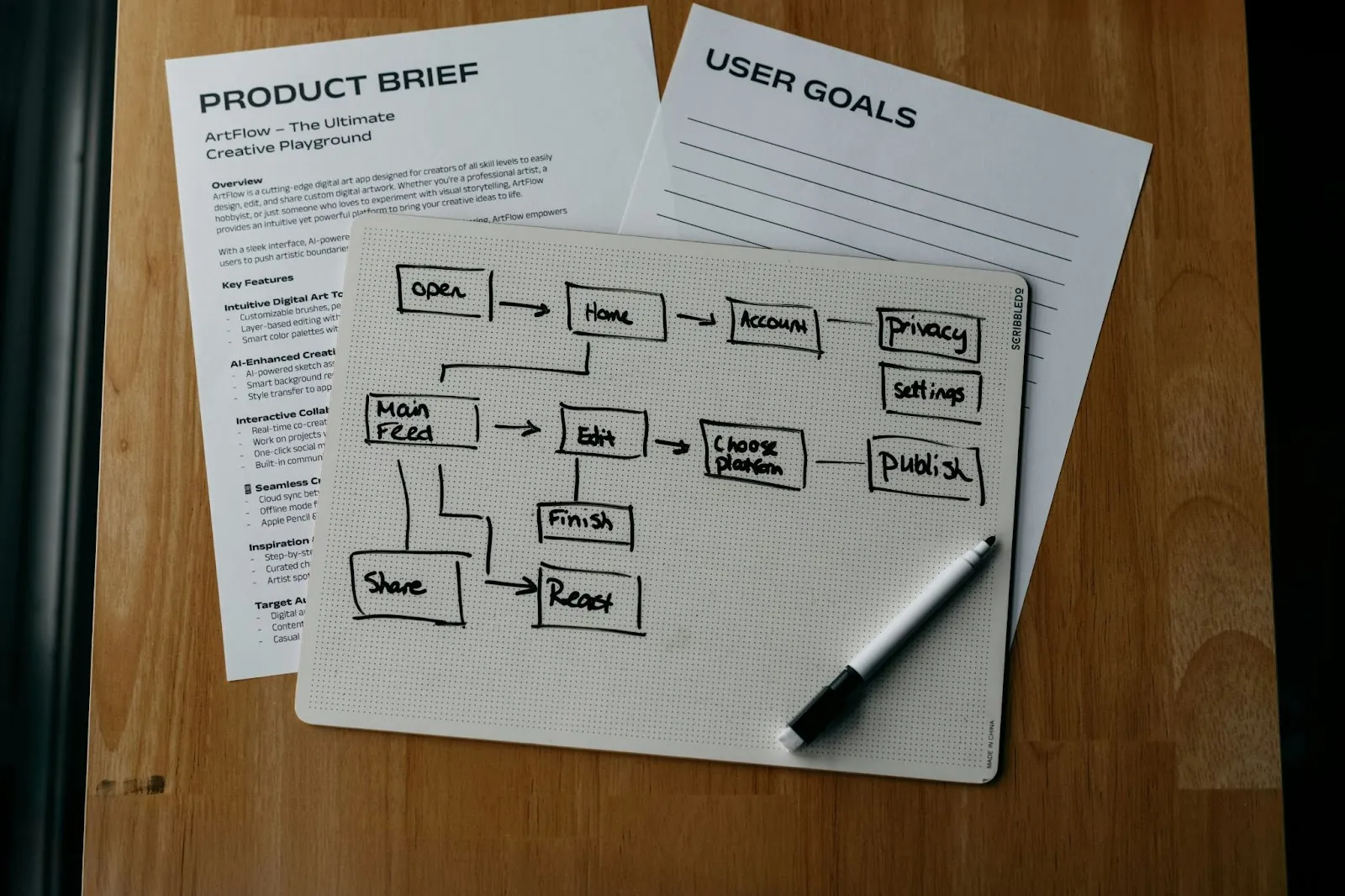
There's something fascinating about watching a hobby transform into a full-fledged business. Maybe it starts in a spare bedroom or a corner of the garage, someone experimenting with their craft, sharing it online, getting a few orders from friends. Then suddenly, they're hiring employees, managing inventory, and dealing with tax codes they never knew existed. That journey from passion project to profitable enterprise is messy, exhilarating, and increasingly common in today's entrepreneurial landscape.
The barriers to entry for starting a business have never been lower. You don't need a brick-and-mortar storefront, a business degree, or even significant startup capital anymore. What you do need is a clear vision, willingness to learn constantly, and the ability to adapt when things inevitably don't go according to plan. The entrepreneurs thriving today aren't necessarily the ones with the most polished business plans, they're the ones who can pivot quickly, stay close to their customers, and maintain their creative spark even as administrative demands pile up.
The creative economy has exploded over the past decade, fueled by e-commerce platforms, social media marketing, and a cultural shift toward valuing handmade and artisanal products. What used to be dismissed as "just a hobby" now represents a legitimate path to financial independence and business success. Artists, craftspeople, and creative entrepreneurs are building sustainable businesses by solving real problems and filling genuine market gaps.
Consider the art supply industry. It's not just about selling products, it's about enabling other people's creativity and entrepreneurial journeys. Smart businesses in this space understand they're not just moving inventory; they're supporting a community of artists who might themselves be building creative businesses. When a watercolor artist needs reliable materials for their commission work or their online tutorials, they need to shop watercolour paints from suppliers who understand quality matters. That relationship between supplier and creative entrepreneur creates an ecosystem where everyone benefits, the artist gets materials that won't let them down in the middle of a project, and the supplier builds a loyal customer base that keeps returning.
The most successful creative businesses recognize they're operating in two worlds simultaneously. There's the creative side, the actual making of things, the artistic vision, the craftsmanship. Then there's the business side, marketing, accounting, customer service, inventory management. The entrepreneurs who thrive are the ones who either develop competency in both areas or build teams that cover their weak spots. You can be the most talented artist in the world, but if nobody knows you exist or your shipping process is a disaster, your business won't survive.
Pricing presents one of the biggest challenges for creative entrepreneurs. There's this persistent tendency to undervalue creative work, to calculate costs based only on materials and forget about the years of skill development, the time spent on each piece, the overhead costs of running a business. Successful creative entrepreneurs learn to price confidently, communicate value clearly, and walk away from customers who don't respect their worth. This shift from hobbyist pricing to professional pricing often marks the transition from side hustle to sustainable business.

While product-based businesses get a lot of attention in entrepreneurial circles, service businesses often provide faster paths to profitability with lower startup costs. You're selling your expertise, your time, and your ability to solve specific problems for clients. The overhead can be minimal, often just your skills, a website, and the ability to deliver results.
The key to building a successful service business lies in specialization. Generalists struggle to stand out in crowded markets. Specialists, on the other hand, can charge premium prices because they solve specific problems better than anyone else. This principle applies across industries, from consulting to home services to professional creative work.
Take the home improvement industry, specifically painting services. It's a fragmented market with lots of competition, but also significant opportunity for businesses that position themselves strategically. A painting company that tries to be everything to everyone—residential, commercial, interior, exterior, all neighborhoods, will struggle against more focused competitors. But a business that becomes known as the go-to choice for high-end residential work in a specific area? That's a different proposition entirely. Homeowners in affluent neighborhoods searching for quality interior painters north shore aren't primarily shopping on price, they're looking for craftsmanship, reliability, and the peace of mind that comes from hiring true professionals who won't disappear halfway through the job or leave them with subpar results.
Service businesses scale differently than product businesses. You can't just manufacture more units. Growth means either hiring more people, systematizing processes so you can handle more clients with the same team, or raising prices to work with fewer clients at higher margins. The most successful service entrepreneurs figure out which scaling strategy aligns with their goals and strengths, then execute relentlessly on that model.
The relationship aspect of service businesses can't be overstated. You're not selling a widget that gets shipped off and forgotten. You're often working in clients' homes or businesses, becoming part of their lives for the duration of a project. Word-of-mouth remains the most powerful marketing tool for service businesses because people trust recommendations from friends and neighbors who've had positive experiences. This means every single client interaction matters, not just the quality of the work itself, but the communication, the reliability, the professionalism, the way you handle problems when they inevitably arise.

Educational entrepreneurship represents one of the fastest-growing segments of the business world. Parents are increasingly supplementing traditional education with specialized resources, online courses, and innovative learning tools. Teachers are building side businesses creating and selling curriculum materials. Entrepreneurs are identifying gaps in the educational market and developing products and services to fill those needs.
The education market is enormous and surprisingly fragmented. Public schools have limited budgets. Parents want engaging, effective learning resources. Teachers need materials that actually work in classroom settings without requiring hours of prep time. These intersecting needs create opportunities for entrepreneurs who can bridge the gaps.
Seasonal educational products represent particularly interesting opportunities. Parents and teachers are always searching for fresh, engaging ways to connect learning with holidays and special occasions. These aren't just frivolous activities, they're strategic tools for maintaining engagement during times when attention naturally drifts toward celebration rather than academics. The entrepreneur who creates genuinely useful, curriculum-aligned easter egg math activities isn't just selling worksheets, they're providing teachers with tools that make their jobs easier and helping students learn while having fun. That value proposition, delivered consistently across multiple products and seasons, builds a sustainable educational business.
The most successful education entrepreneurs understand they're not just selling content, they're solving specific problems for specific customer segments. A resource that tries to appeal to everyone from preschool through high school, covering every subject, never gains traction. But a resource that deeply serves second-grade math teachers who need engaging supplementary materials? That can build a loyal following and generate steady revenue.
Digital products in education offer particularly attractive business models. The upfront work of creating high-quality resources is significant, but once created, digital products scale beautifully. Whether you sell ten copies or ten thousand, your fulfillment costs remain essentially zero. The challenge lies in standing out in increasingly crowded marketplaces and building distribution channels that consistently bring qualified buyers to your products.

There's a critical transition point in every business journey, the moment when you shift from being a self-employed person doing all the work yourself to being a business owner with systems that can operate without your constant involvement. Many entrepreneurs never make this transition, essentially buying themselves a job rather than building a business. Others make the leap but struggle because they haven't built the proper foundation first.
Systems are what separate sustainable businesses from exhausting treadmills. A system is simply a documented, repeatable process for getting something done. How do you onboard new clients? There should be a system. How do you handle customer service inquiries? System. How do you manage inventory, process orders, handle accounting, market your business? Systems for all of it.
The entrepreneur who keeps everything in their head creates a business that can't function without them. They can't take a vacation without everything falling apart. They can't delegate effectively because nobody else knows how things actually work. They become the bottleneck preventing their own growth. Building systems feels tedious when you're in the middle of running a business, but it's the infrastructure that makes scaling possible.
Technology has made systemization more accessible than ever. Project management tools, customer relationship management software, automated email sequences, inventory management systems, there are affordable solutions for almost every business function. The key is implementing these tools strategically rather than collecting software subscriptions that never get properly utilized.
Delegation represents another critical skill that separates successful entrepreneurs from struggling ones. You can't do everything yourself forever, but delegation doesn't mean just dumping tasks on other people and hoping for the best. Effective delegation requires clear communication, proper training, documented processes, and appropriate oversight. The goal is to work yourself out of the day-to-day execution while maintaining quality standards and strategic direction.

Many creative and service-based entrepreneurs resist focusing on numbers. They got into business because they're good at making things or solving problems, not because they love spreadsheets. But financial literacy isn't optional for business owners, it's the difference between thriving and merely surviving (or failing altogether).
You don't need an MBA or a degree in accounting, but you do need to understand a few fundamental concepts. First, revenue isn't profit. That $10,000 month sounds impressive until you subtract the $8,000 in expenses, leaving you with $2,000 before taxes. Many businesses fail because owners confuse revenue with actual take-home income and make lifestyle or business decisions based on misleading numbers.
Cash flow management kills more businesses than lack of profitability. You can be profitable on paper but run out of cash to pay bills if your revenue timing doesn't align with your expense timing. This is particularly challenging for service businesses that don't get paid until after work is completed, or product businesses that must purchase inventory well before they receive revenue from sales.
Pricing strategy directly impacts every other business metric. Price too low, and you'll work yourself to exhaustion serving massive volumes at tiny margins. Price too high without sufficient value justification, and you'll struggle to find customers. The sweet spot varies by industry, market, and positioning, but it's always higher than most new entrepreneurs initially think. Confident pricing based on clear value propositions separates sustainable businesses from struggling ones.
Understanding your numbers also means tracking the right metrics for your specific business model. For product businesses, metrics like average order value, customer acquisition cost, and inventory turnover matter immensely. Service businesses need to watch capacity utilization, billable hours percentage, and client lifetime value. Educational product entrepreneurs should track conversion rates, refund rates, and seasonal trends. The entrepreneurs who consistently review these metrics and adjust based on what they reveal build businesses that compound growth over time.
The marketing landscape has transformed dramatically over the past decade. Traditional advertising still exists, but for most small businesses, it's been superseded by digital marketing, content creation, and community building. The entrepreneurs winning today aren't necessarily outspending their competitors, they're out-creating and out-engaging them.
Content marketing remains one of the most effective strategies for small businesses with limited budgets. Creating genuinely valuable content, blog posts, videos, social media, podcasts, whatever format suits your strengths, builds authority, attracts potential customers, and creates assets that continue working for your business long after you've created them. The key word is "genuinely valuable." Nobody wants more mediocre content cluttering the internet. If you're going to invest time in content creation, make it substantive enough that people actually want to consume and share it.
Social media offers unprecedented access to potential customers, but it's also incredibly noisy and increasingly pay-to-play. Organic reach has declined across most platforms. Building an engaged community requires consistency, authenticity, and patience. The businesses succeeding on social media aren't necessarily posting the most; they're posting content that resonates, engaging meaningfully with their audience, and showing up consistently over long periods.
Email marketing, despite predictions of its demise, remains one of the highest ROI marketing channels. You own your email list in a way you don't own your social media following. Platform algorithm changes can't cut off your access to people who've voluntarily given you their email address. Building and nurturing an email list should be a priority for virtually every business, regardless of industry.
The concept of "know, like, trust" governs most purchasing decisions, particularly for higher-priced offerings. People need to know you exist (awareness), like what you represent (connection), and trust that you'll deliver on your promises (credibility) before they buy. Your marketing should systematically move people through these stages rather than just shouting "buy now" at strangers.

Entrepreneurship gets romanticized in our culture. We celebrate overnight success stories while ignoring the years of grinding work that preceded the breakthrough. We focus on the excitement of launch days and forget about the thousand mundane decisions and small improvements that actually build sustainable businesses.
The reality of entrepreneurship involves long periods of uncertainty, countless small failures, and constant problem-solving. It requires resilience when things don't work out, humility to learn from mistakes, and confidence to keep moving forward despite setbacks. The entrepreneurs who succeed long-term aren't necessarily the most talented or the smartest, they're often simply the most persistent and adaptable.
Building a business that lasts requires balancing short-term needs with long-term vision. Yes, you need revenue this month to keep the lights on. But you also need to invest in systems, marketing, and development that won't pay off for months or years. Managing this tension, making money now while building for the future, separates sustainable businesses from those that plateau or flame out after initial success.
The lifestyle considerations matter more than many people acknowledge when starting out. That freedom everyone talks about when they encourage entrepreneurship? It's real, but it often takes years to achieve. Early-stage entrepreneurship frequently means longer hours and more stress than traditional employment. The freedom comes later, after you've built systems, delegated effectively, and established reliable revenue streams. Going in with realistic expectations prevents the disillusionment that causes many entrepreneurs to quit right before things start working.
Your business should serve your life, not consume it. This sounds obvious, but many entrepreneurs build businesses that become golden handcuffs, technically successful but personally unsustainable. Defining what success actually means to you, beyond just revenue numbers, helps ensure you build something that enhances rather than dominates your life.
Every successful business started with someone taking that first uncomfortable step from thinking about entrepreneurship to actually doing it. The gap between wanting to start a business and actually starting one is where most entrepreneurial dreams die. Not because the ideas weren't viable or the people weren't capable, but because the uncertainty felt overwhelming and the timing never seemed quite right.
Here's the uncomfortable truth: the timing will never be perfect. There will always be reasons to wait. More money in savings would be nice. More experience would be helpful. Market conditions could be better. But while you're waiting for perfect conditions, others are launching imperfect businesses and learning through action.
The most effective approach involves starting smaller and leaner than you think you should. Don't quit your job and invest your life savings before validating your concept. Test your idea with minimal investment. Get feedback from real potential customers, not just supportive friends and family. Iterate based on what you learn. Build momentum gradually rather than betting everything on a single big launch.
Surrounding yourself with other entrepreneurs accelerates your learning curve dramatically. Join communities, attend events, find mentors who've built similar businesses. Entrepreneurship can feel isolating, especially in the early stages when you're working alone and results are minimal. Connecting with others on similar journeys provides support, accountability, and accumulated wisdom that helps you avoid common mistakes.
The businesses that thrive tomorrow are being built today by people willing to start before they feel ready, learn from inevitable failures, and persist through the challenging middle period when progress feels slow and success remains uncertain. Whether you're transforming a creative passion into a product business, building a specialized service company, or creating educational resources that solve real problems, the fundamental principles remain the same: provide genuine value, focus on sustainability over flash, and remember that building something meaningful takes time.
Your entrepreneurial journey won't look like anyone else's. The path will be messier than you expect, take longer than you'd prefer, and teach you things you never imagined needing to know. But for those willing to embrace the uncertainty and commit to the long game, entrepreneurship offers opportunities for creative expression, financial independence, and personal growth that traditional employment simply cannot match.
You should move away from hobbyist pricing, which often only covers materials. Calculate your prices based on your skill, time, overhead costs, and the value you provide to the customer. Research your market, but don't be afraid to price confidently to reflect your professional expertise.
The most critical first step is to validate your idea. Before investing significant time or money, test your concept with a small audience of potential customers. Get real feedback and be prepared to adjust your offering based on what you learn. Action, even on a small scale, is more valuable than endless planning.
Systems are the foundation for growth. They are documented processes that allow you to deliver consistent quality, save time, and eventually delegate tasks. Without systems, your business cannot scale beyond what you can personally handle, making it difficult to grow or even take a holiday. A platform like Figure Bus can help you organise these processes from the start.
This depends on your skills and goals. Service businesses often have lower start-up costs and a faster path to profit because you're selling your expertise. Product businesses can scale more easily once established, especially with digital products. The article suggests that specialising in a service can be a very effective strategy.
Content marketing is your most powerful tool. Create genuinely helpful and valuable content, such as blog posts, tutorials, or social media updates, that addresses your ideal customer's problems. This builds trust and authority over time without requiring a large advertising spend. Also, focus on building an email list from day one.